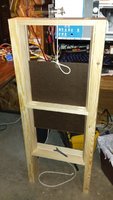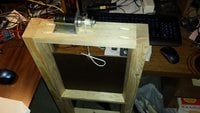- Thread starter
- #21
JT,
Thanks for the invite in the other thread.
OT for a moment: I don't know any code other than G&M (I'm a CNC programmer) but am very interested in learning python and playing around with a RaspberryPi. I'm in the early stages of it all. I haven't even built a coop yet, but want to incorporate some automation from the get go. Obviously you ran power to your coop...did you also run CAT5 or are you wireless? I think I'd like to have a hardwired data connection to my house, is CAT5 the best way to do it?
I see the CAT question has been expertly answered and glad to know there are other Python programmers in the crowd.
Let me know when you get your Raspberry Pi 3 B and I'll get you going quick.
Python is an easy language to learn and there is no need to pay to learn Python as there are just too many good tutorials out there. The biggest thing that trips up beginners is the indentation. Python requires indentation to indicate the next level down so to speak.
JT




